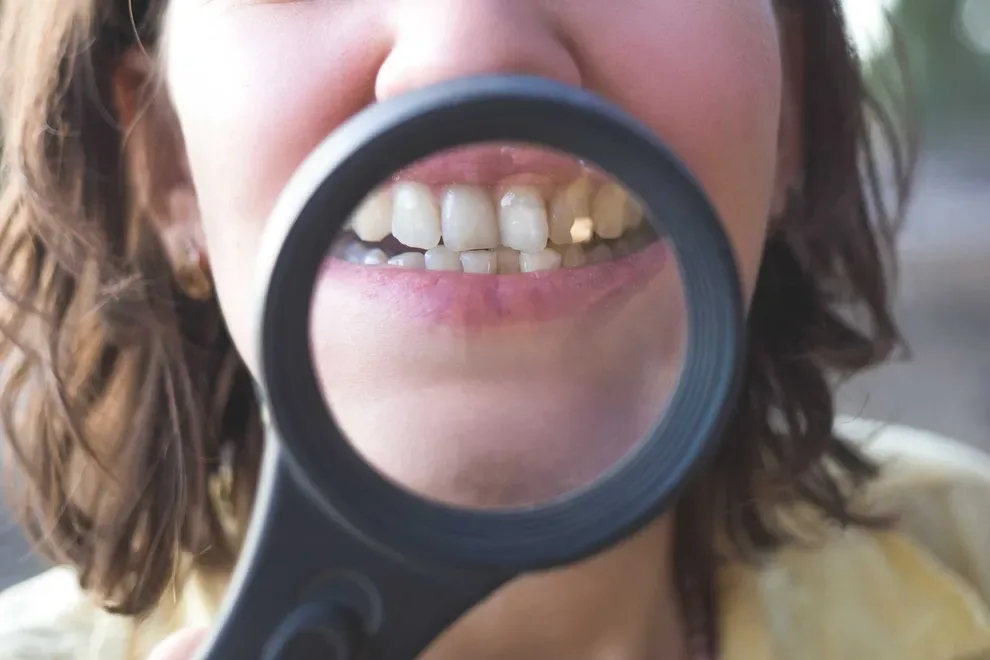What Can Cause Misaligned Teeth?

Table of Contents
- Misaligned Teeth Is A Bigger Issue
- Potential Causes of Misaligned Teeth
- Treating Misaligned Teeth
- Dental Alignments Improve Overall Health
- References
Genetics and age are common factors associated with misaligned teeth.
There are other underlying issues that contribute to dental problems, including shifting teeth. These issues include thumb sucking, malnutrition, trauma to the mouth, and gum disease.
Misaligned Teeth: More Than Just a Smile Problem
Crooked, crowded, gapped, overbite, underbite – these are all terms for malocclusion, or an abnormal alignment of any upper or lower teeth. There are several classes of dental malocclusions, and nearly everyone in the world has one.
Misaligned teeth are a common part of being human, so much so that most children in the United States wear braces at some point. Now, more adults are choosing orthodontic treatment too — either because they did not have braces as children, or they have a new misalignment that needs treatment.
There are several potential causes of misaligned teeth. Often, misalignment comes from a combination of causes, several of which are out of your control.
Potential Causes of Misaligned Teeth
Here are some potential causes of misaligned teeth:
Genetics
A mismatch in the size of the jaw compared to the size of the teeth
Extra teeth
Impacted teeth, especially wisdom teeth
Abnormally shaped teeth
Birth defects of the jaw
Thumb sucking
Tongue thrusting
Mouth breathing, which can increase tongue thrusting
Losing Teeth
Losing a permanent tooth, leading to shifting of all teeth
Losing baby teeth too early
Dental Treatment Problems
Ill-fitting dental fillings, crowns, implants, or partial or full dentures
Poorly fitting dental appliances like braces, retainers, and mouthguards
Gum Disease, which goes unnoticed or untreated in almost half the adult population of the United States
Malnutrition
Trauma from an accident or injury
While these conditions cause misaligned teeth, having misaligned teeth can also make these conditions worse. For example, untreated periodontal disease can cause inflammation and infection of the roots and gums, which makes teeth loose, so they begin to shift. Misaligned teeth create places in the mouth where more tartar can collect because the teeth are harder to clean properly, which increases the severity of the disease.
Habitually breathing through your mouth can lead to tongue thrusting, which can force your teeth forward, out of alignment. However, misaligned teeth that do not fit together can make breathing and speaking hard, which can increase the chance that your tongue does not fit properly in your mouth, leading to more tongue thrusting and mouth breathing. You may also suffer from speech problems.1
If you lose a tooth due to injury, many dentists are eager to place an implant and dental crown to replace the tooth. This is because your teeth might shift out of alignment to fill the space left by the missing tooth. This shifting can cause changes to the roots and gums, making your teeth looser and more likely to shift.
Finally, any genetic condition that puts you at greater risk of misaligned teeth can increase your chances of suffering any of the other conditions, such as malnutrition if you struggle to eat or chew, trauma from teeth grinding or slamming together (which can damage the enamel), periodontal disease from tartar build-up in hard-to-clean places, and a greater risk for losing teeth. These problems compound on each other, especially without treatment.
A jaw that is perfectly aligned, the jaw and teeth are working together without stress on your jaw's joints or uneven pressure on the bite.
Treating Misaligned Teeth
There are many things you can do to reduce your risk of misaligned teeth, keep your teeth healthy, and realign your teeth. Here are a few options:
If you have just completed orthodontic treatment, maintain a good oral hygiene routine and keep up with dental visits for cleanings. This will help to reduce the risk of gum disease, which might cause your teeth to misalign again.
Work with your dentist to treat underlying conditions like periodontal disease, which might make misalignment worse or reduce the effectiveness of orthodontics.
Ask about orthodontic treatment options, including which would most benefit your particular situation. You may need traditional braces, palatal expanders, or even to remove teeth to reduce crowding.
Know that misaligned teeth do not mean you have done anything wrong. Changes in your teeth are normal as you get older.
Think about the long-term benefits of professional orthodontic treatment rather than just cosmetic options that might make your teeth look good but do not support improved health overall.
Your Overall Health & Wellness Improve With Better Dental Alignment
Many people want straighter teeth without considering that there are benefits to improving the alignment of your teeth beyond just appearance. Many types of malocclusions are not preventable, as they are a result of genetics and age. They have nothing to do with the overall health of your teeth or gums.
If you go to your dentist regularly and practice good oral hygiene at home, you are not likely to develop severe periodontal disease from tartar build-up and untreated gingivitis. This means you are less likely to lose teeth, damage enamel, or have stained or discolored teeth.
Minor misalignments may not require treatment for health reasons. Ask your dentist about the misalignment progression. You can then gauge if this alignment change will become a problem down the road.
If you know you have good underlying oral health, and you want better dental alignment to improve your self-confidence and appearance, there are still orthodontic options that can suit you. In fact, many companies offer over-the-counter, mail-order teeth aligners.
